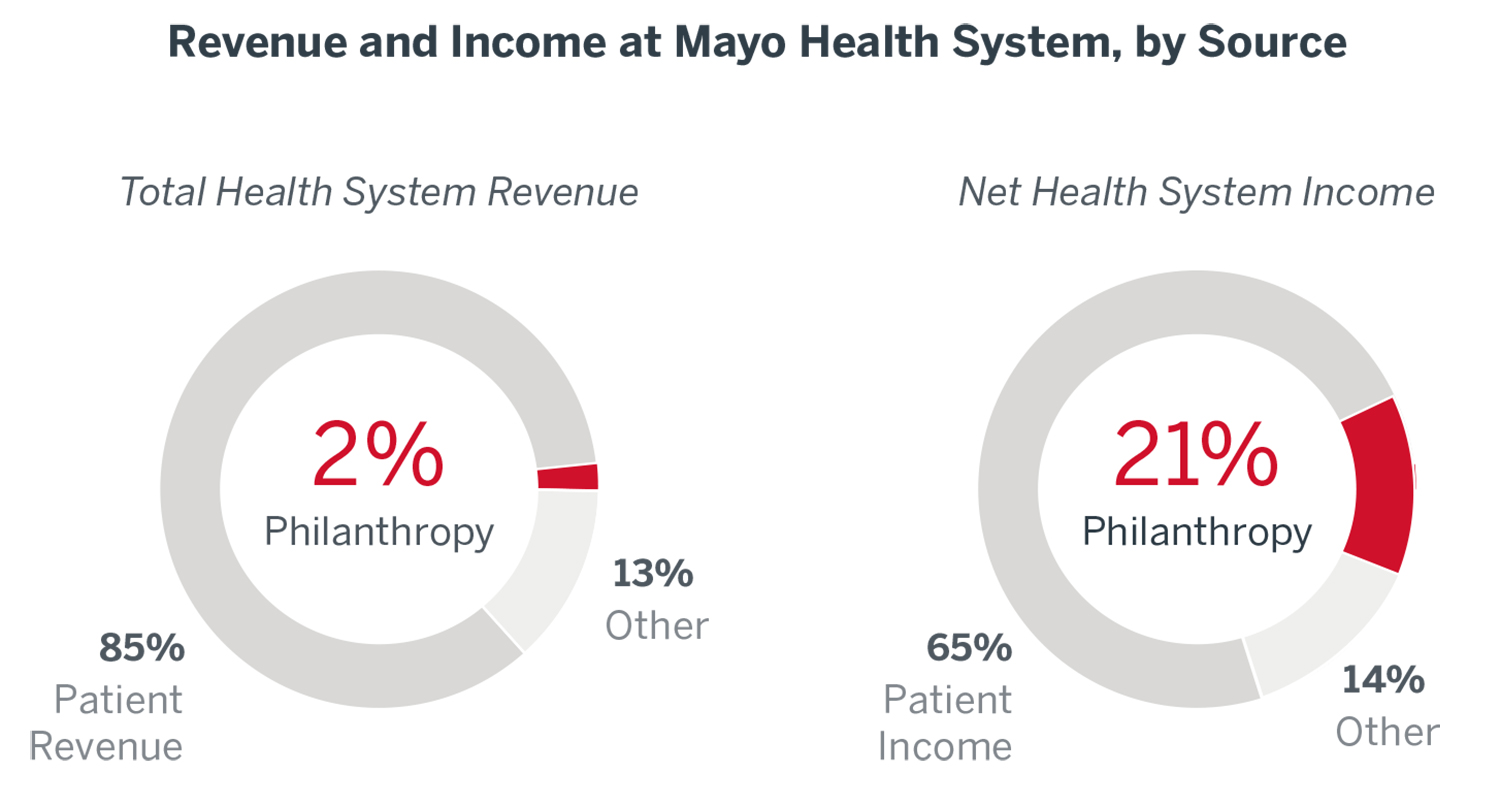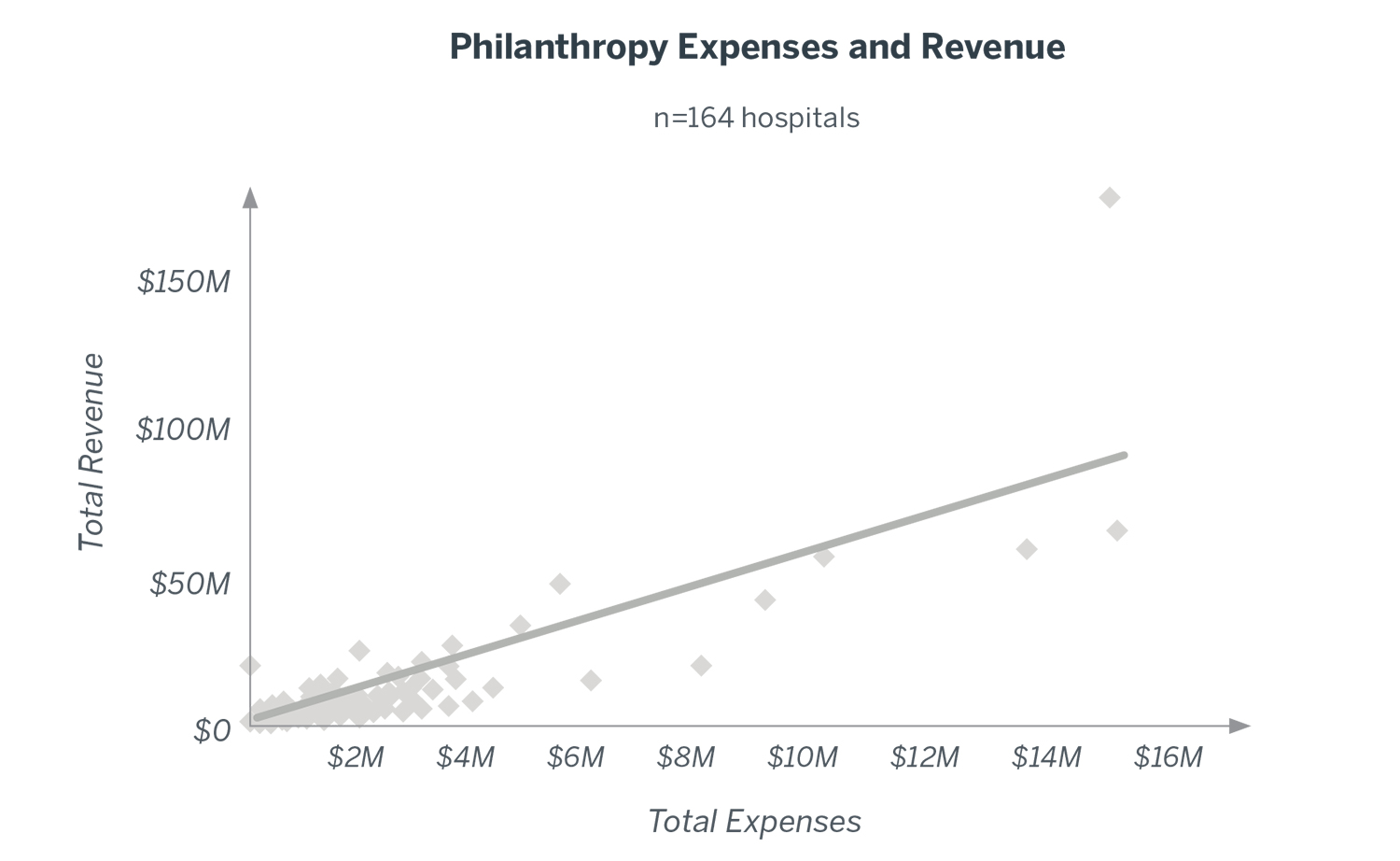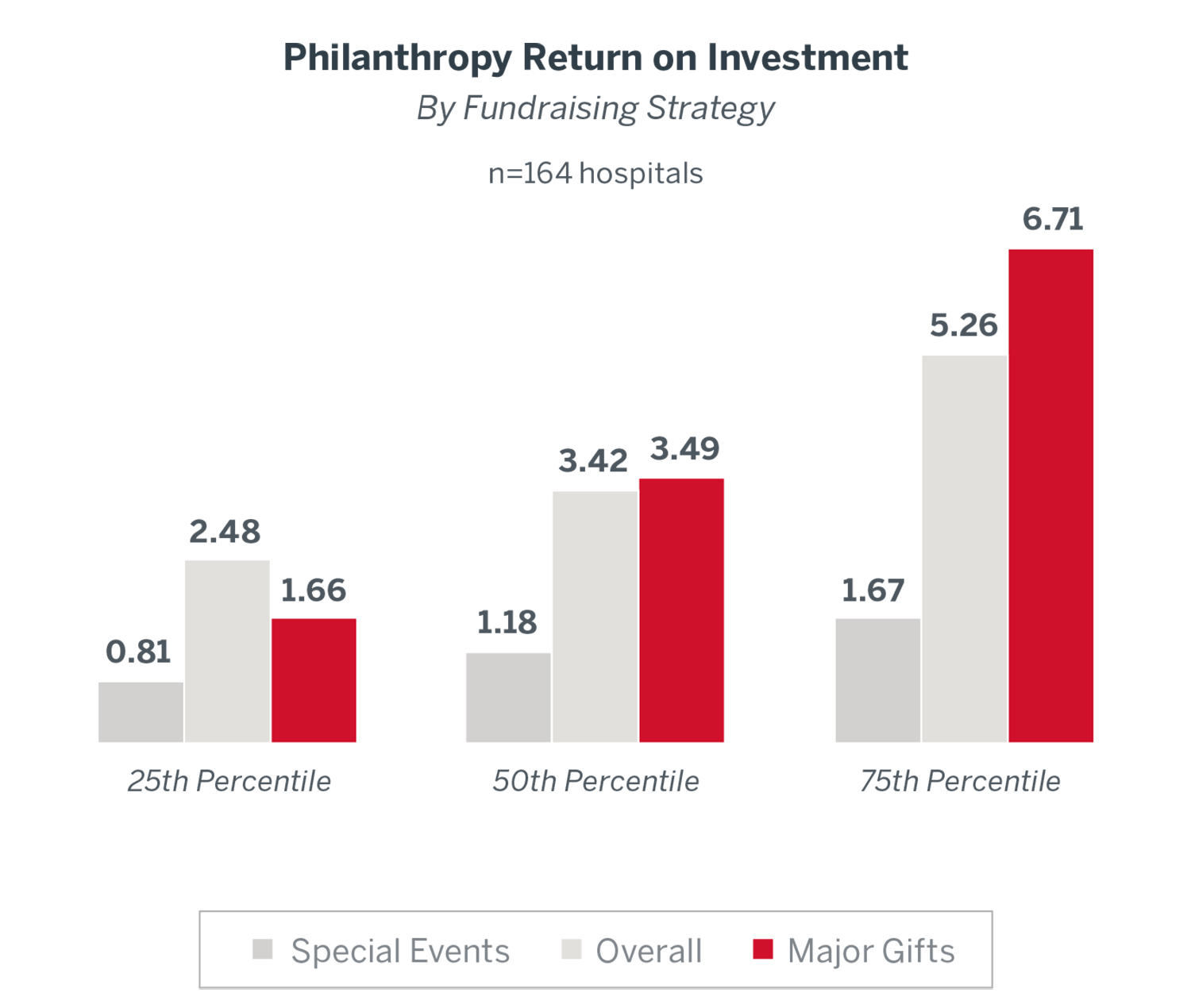Overview
That's why forward-looking executives are investing in philanthropy to improve their institution's finances and fund capital and program investments.
Six levers for generating health system revenues
- Volumes. Hospital demand is not expected to increase like it has in the past, and volumes will deflate over the long term through population health initiatives.
- Prices. We're seeing downward pressure on reimbursement from all payers. The ability to secure price increases is declining and being conditioned on performance.
- Loans. Many hospitals' bond ratings have been lowered, and borrowing rates have not been favorable. Debt also puts additional pressure on future finances.
- Financial investments. Stocks and other financial investments are subject to market volatility.
- New businesses. Becoming a payer or launching innovative business opportunities are feasible only for the largest organizations, require substantial up-front investment, and can be quite risky.
- Philanthropy. Philanthropy has traditionally provided a high return, and the hospital and health care fundraising sector is expected to grow.
High-performing foundations account for more than 20% of net income of their health systems.
You should assess the impact of philanthropy by its share of net income, rather than its total revenue. This shift in thinking demonstrates the true business merit of philanthropy.
For example, the $361 million recently raised by one foundation accounted for just 2% of overall health system revenue, but over a fifth of its net income.

Philanthropy is less resource‑intensive than operational revenue streams.
A dollar generated by philanthropy takes less organization‑wide effort, resources, and space to produce.
At one health system, it would take more than $70 million in charges, or about 5,000 inpatients (a staggering volume increase in today's market) to produce the same $1 million that its foundation secures.
To increase the revenue potential of philanthropy, invest more—not less.
The adage "money begets money" holds true in philanthropy—foundations and development offices with higher budgets tend to generate more revenue.
While how much money you raise also depends on the wealth and generosity of your local population, no one foundation or development office has fully tapped the philanthropic capacity of its market.

There is plenty of opportunity to elevate philanthropy's return on investment.
No matter what your philanthropy budget is, your foundation or development office can improve its financial impact on your institution. How? By focusing on raising more dollars, not by cutting costs.
Our data show that philanthropy's ROI is more closely tied to how much revenue you generate—not by how much you spend—and that higher revenues tend to generate higher returns.
If you want to be a top performer, focus on major gifts.
Outdated perspectives of philanthropy associate fundraising only with large-scale, public events like galas and golf tournaments. While these events can play a meaningful role, the key to maximizing revenue and return on investment is a focus on securing large gifts from individual donors.

What can executives do to help their philanthropy enterprise maximize return?
Your development office or foundation needs your advocacy and collaboration. Executive and clinician partnerships with philanthropy inspire the largest gifts and ensure that funds support the most critical strategic priorities.
Don't miss out on the latest Advisory Board insights
Create your free account to access 2 resources each month, including the latest research and webinars.
Want access without creating an account?
You have 2 free members-only resources remaining this month remaining this month.
1 free members-only resources remaining this month
1 free members-only resources remaining this month
You've reached your limit of free monthly insights
Become a member to access all of Advisory Board's resources, events, and experts
Never miss out on the latest innovative health care content tailored to you.
Benefits include:
You've reached your limit of free monthly insights

